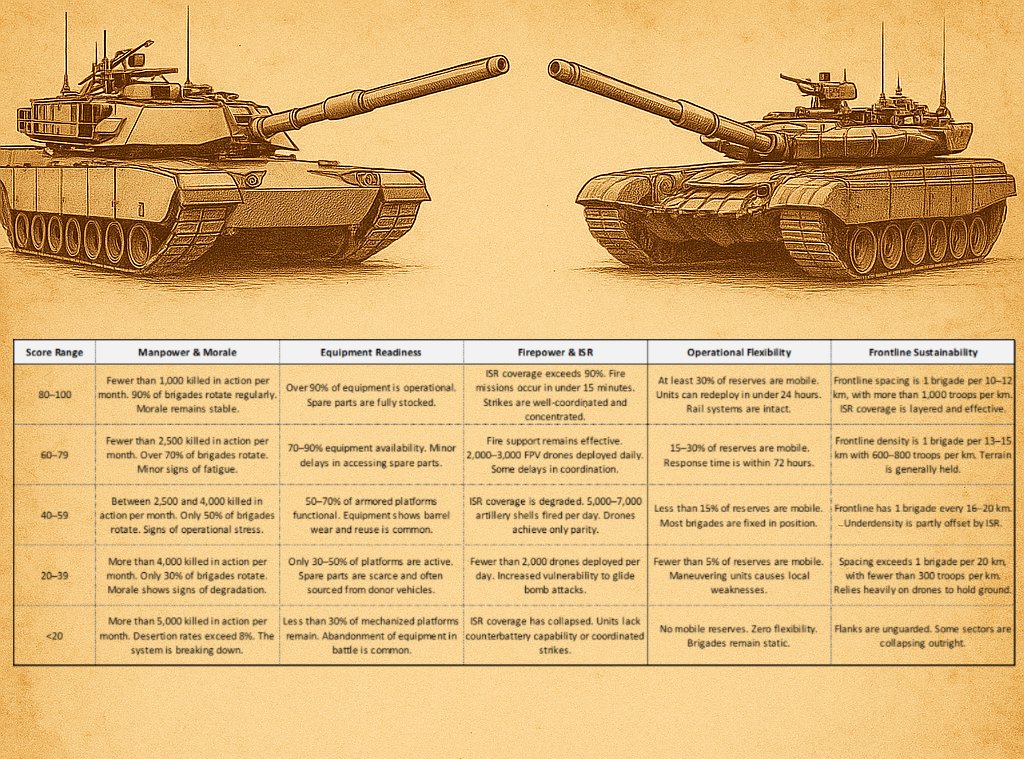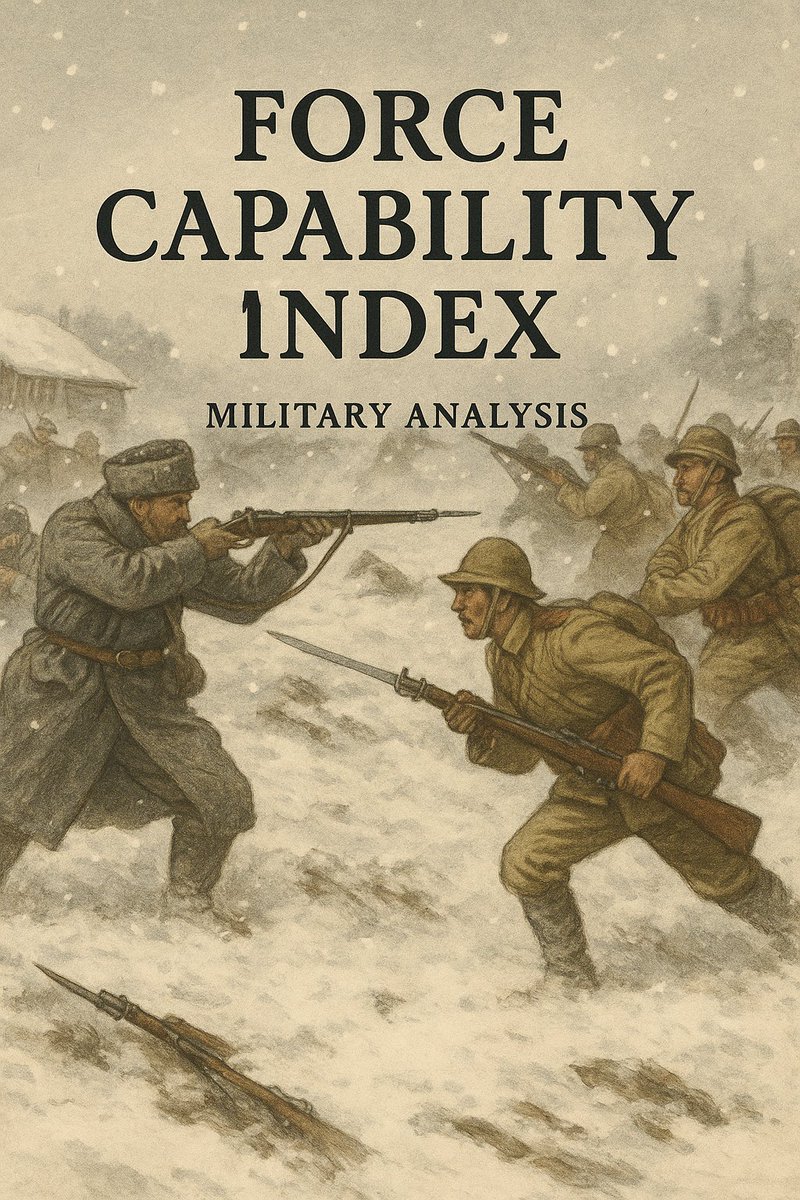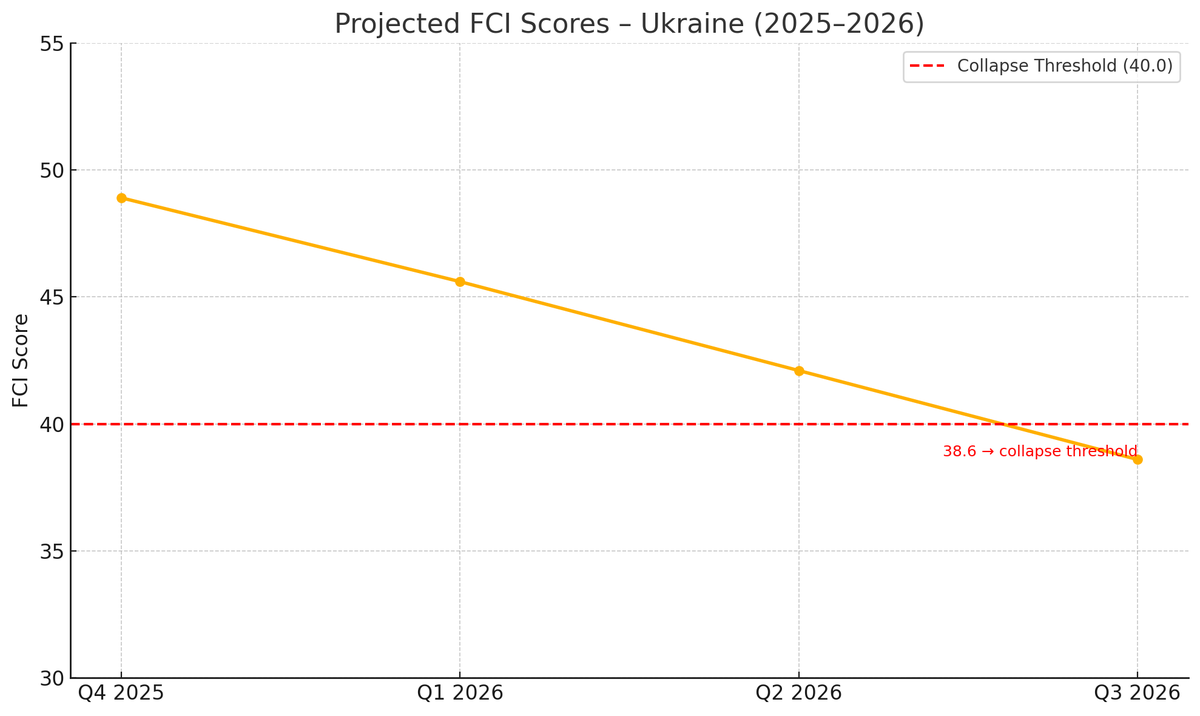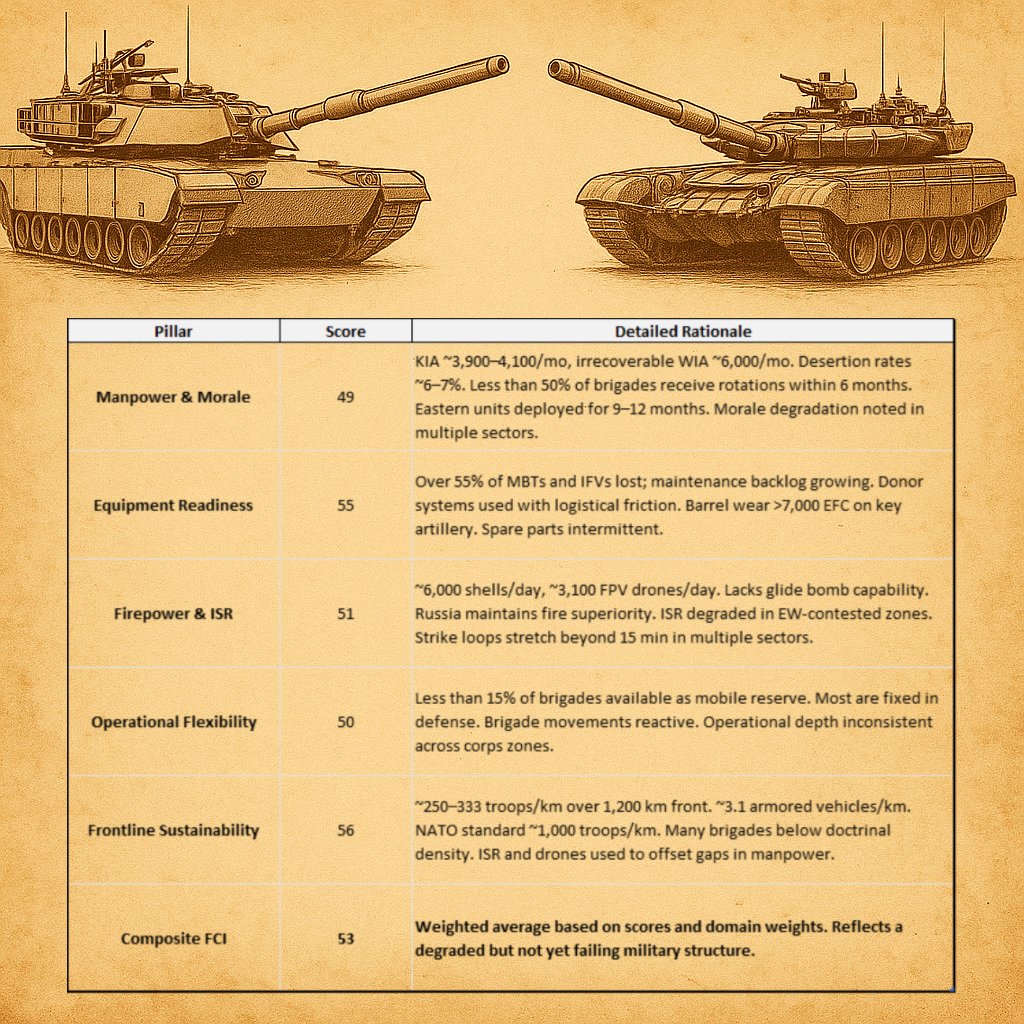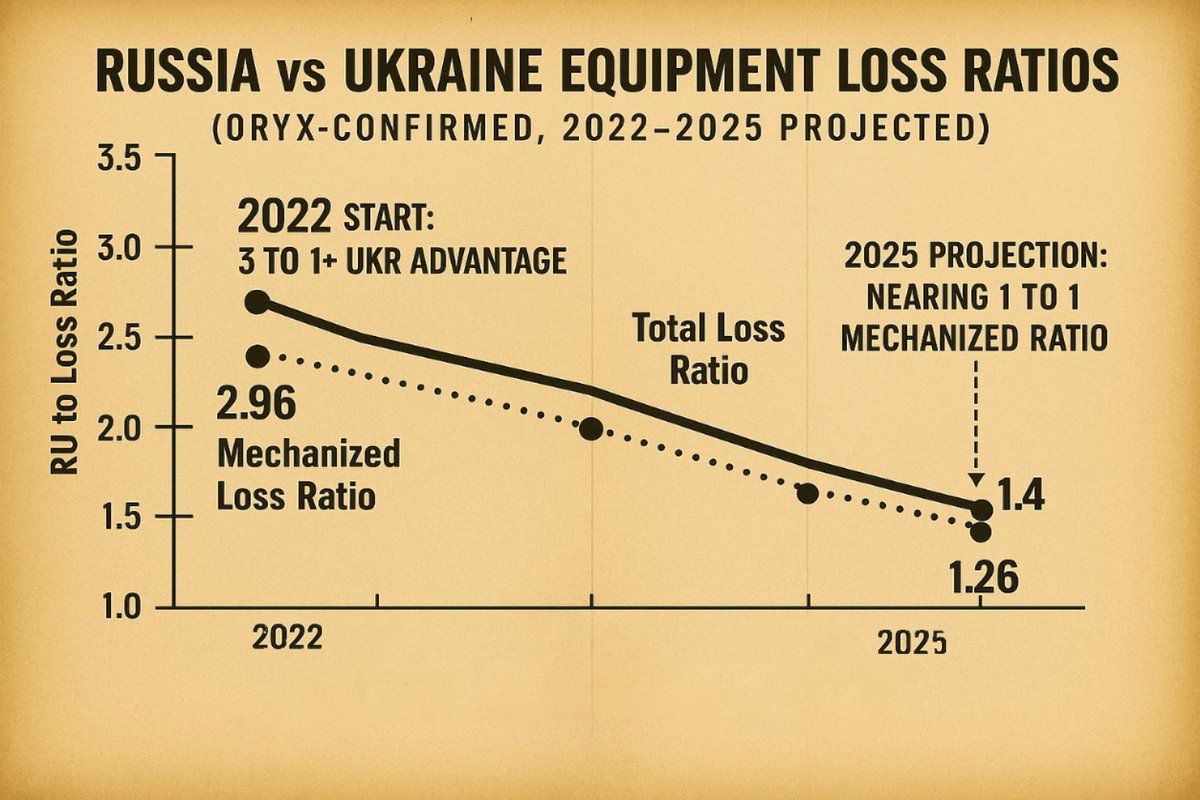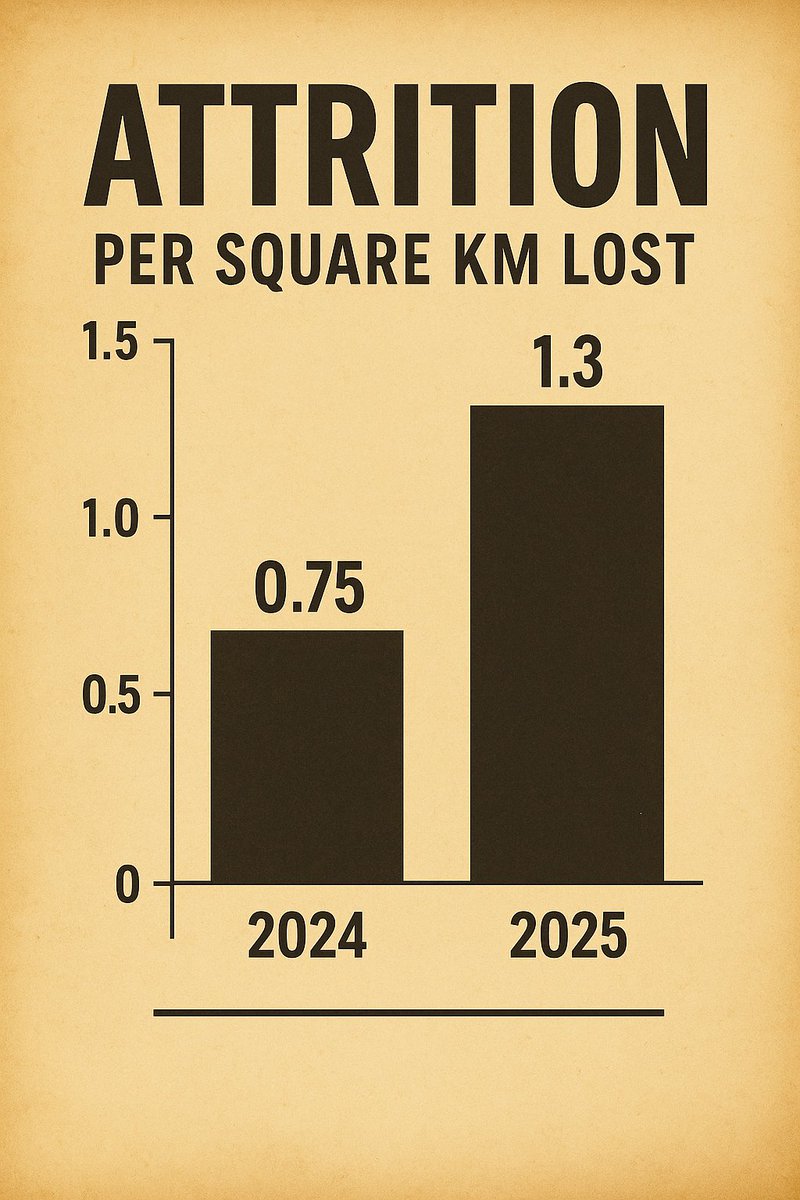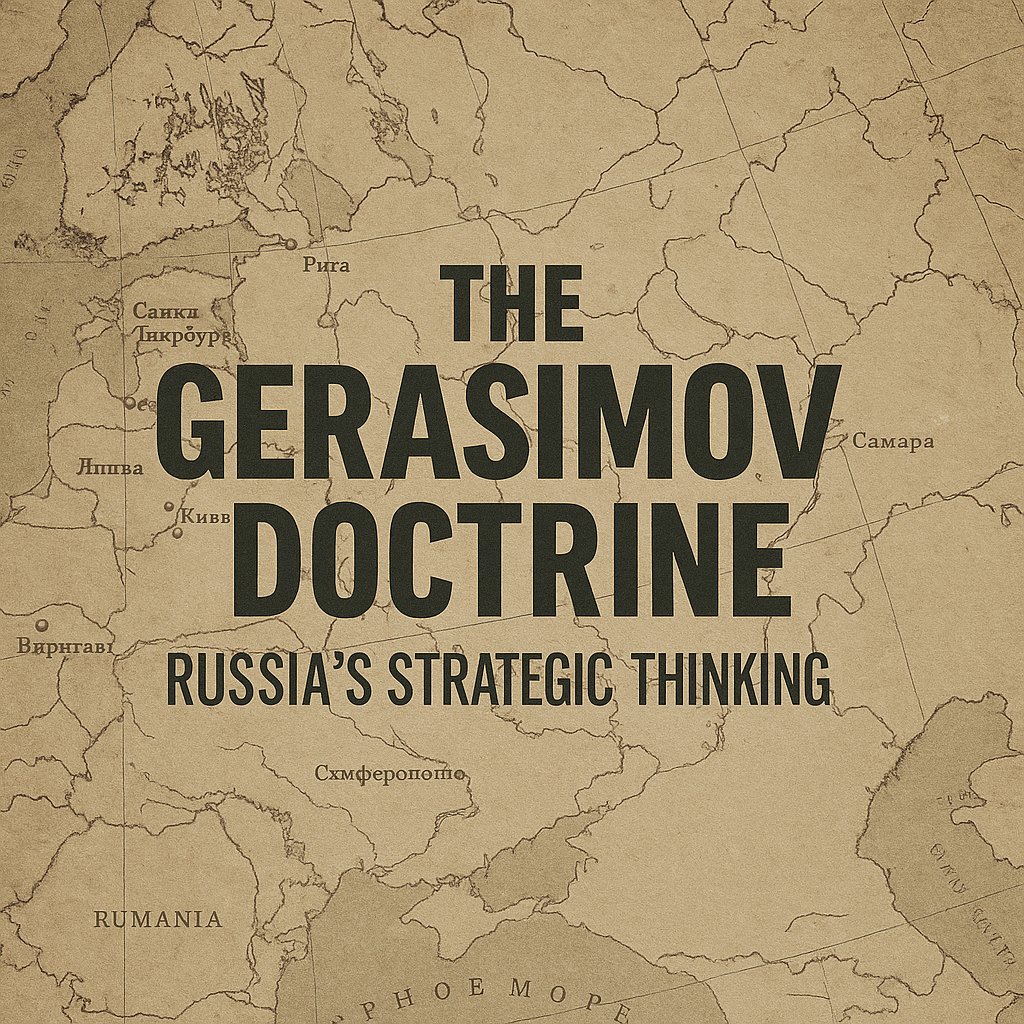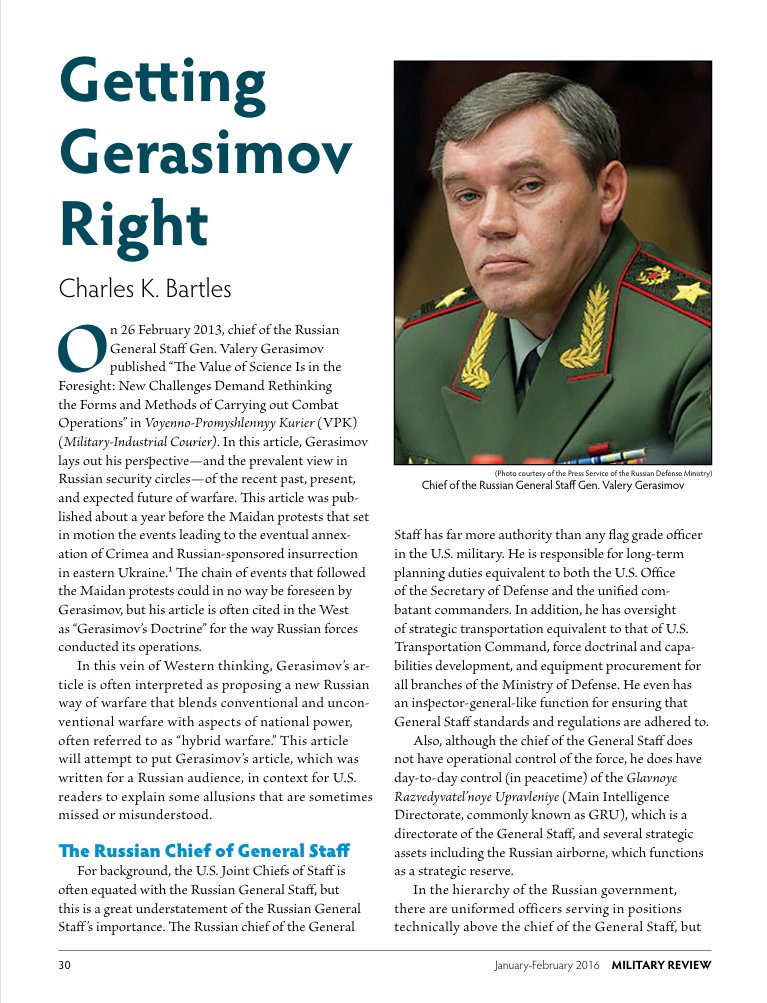🧵 Ukraine at a Strategic Crossroad: Doctrine Shifts That May Define 2026
1. Introduction – Ukraine’s Last Strategic Options
In our previous Force Capability Index assessment, we projected a collapse of Ukraine’s military balance within 18 months without major doctrinal change.
In light of the slow pace of negociations, let us look at military scenario alternatives.
This thread examines 3 radical strategic models that could shape the outcome by the end of 2026. None offers a guarantee of victory, yet each provides a distinct framework for understanding the remaining operational possibilities. The projected FCI scores in 18 months are as follows:
- Elastic Defense = 45;
- Dnipro Line and Guerrilla War = 38;
- High Tech Active Defense= 52.
#UkraineRussiaWar️️ #StrategicScenarios #Military


1. Introduction – Ukraine’s Last Strategic Options
In our previous Force Capability Index assessment, we projected a collapse of Ukraine’s military balance within 18 months without major doctrinal change.
In light of the slow pace of negociations, let us look at military scenario alternatives.
This thread examines 3 radical strategic models that could shape the outcome by the end of 2026. None offers a guarantee of victory, yet each provides a distinct framework for understanding the remaining operational possibilities. The projected FCI scores in 18 months are as follows:
- Elastic Defense = 45;
- Dnipro Line and Guerrilla War = 38;
- High Tech Active Defense= 52.
#UkraineRussiaWar️️ #StrategicScenarios #Military
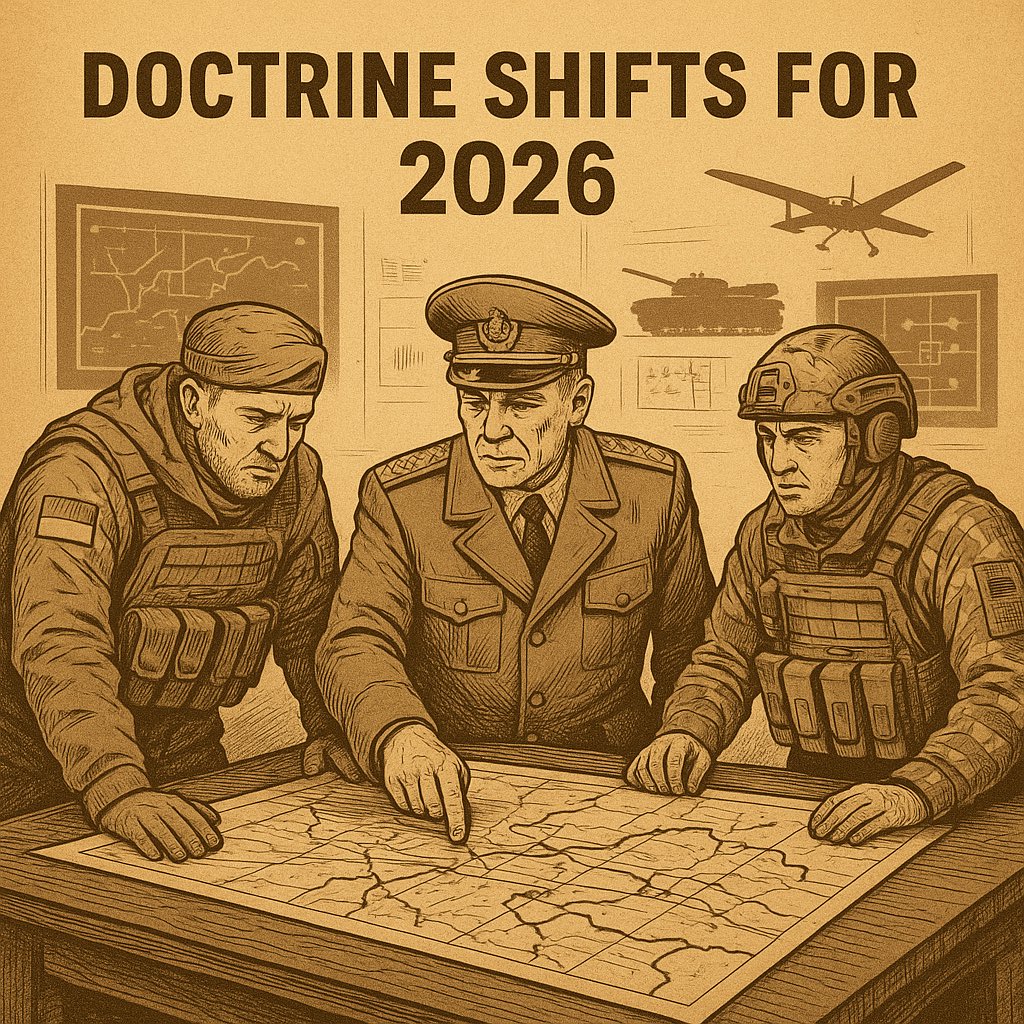


2. Scenario One – Elastic Defense
Elastic Defense envisions a mobile, flexible posture, trading ground to stretch enemy lines, striking flanks, and using terrain to buy time. It recalls the Finnish Winter War of 1939/1940, where Finland delayed the Soviet advance through maneuver, ambush, and decentralised resistance.
However, just as Finland could not reverse territorial losses, Ukraine under this approach would merely postpone defeat without regaining ground. The concept demands over one 1000 operational armored fighting vehicles, veteran brigades to execute the complex manœuvres required, sustained fuel and repair cycles, and integrated intelligence, surveillance, and electronic warfare support.
Ukraine’s current equipment readiness stands below 45%, with insufficient mobility remaining for such an approach facing the rapidly expanding Russian drone capabilities.

Elastic Defense envisions a mobile, flexible posture, trading ground to stretch enemy lines, striking flanks, and using terrain to buy time. It recalls the Finnish Winter War of 1939/1940, where Finland delayed the Soviet advance through maneuver, ambush, and decentralised resistance.
However, just as Finland could not reverse territorial losses, Ukraine under this approach would merely postpone defeat without regaining ground. The concept demands over one 1000 operational armored fighting vehicles, veteran brigades to execute the complex manœuvres required, sustained fuel and repair cycles, and integrated intelligence, surveillance, and electronic warfare support.
Ukraine’s current equipment readiness stands below 45%, with insufficient mobility remaining for such an approach facing the rapidly expanding Russian drone capabilities.

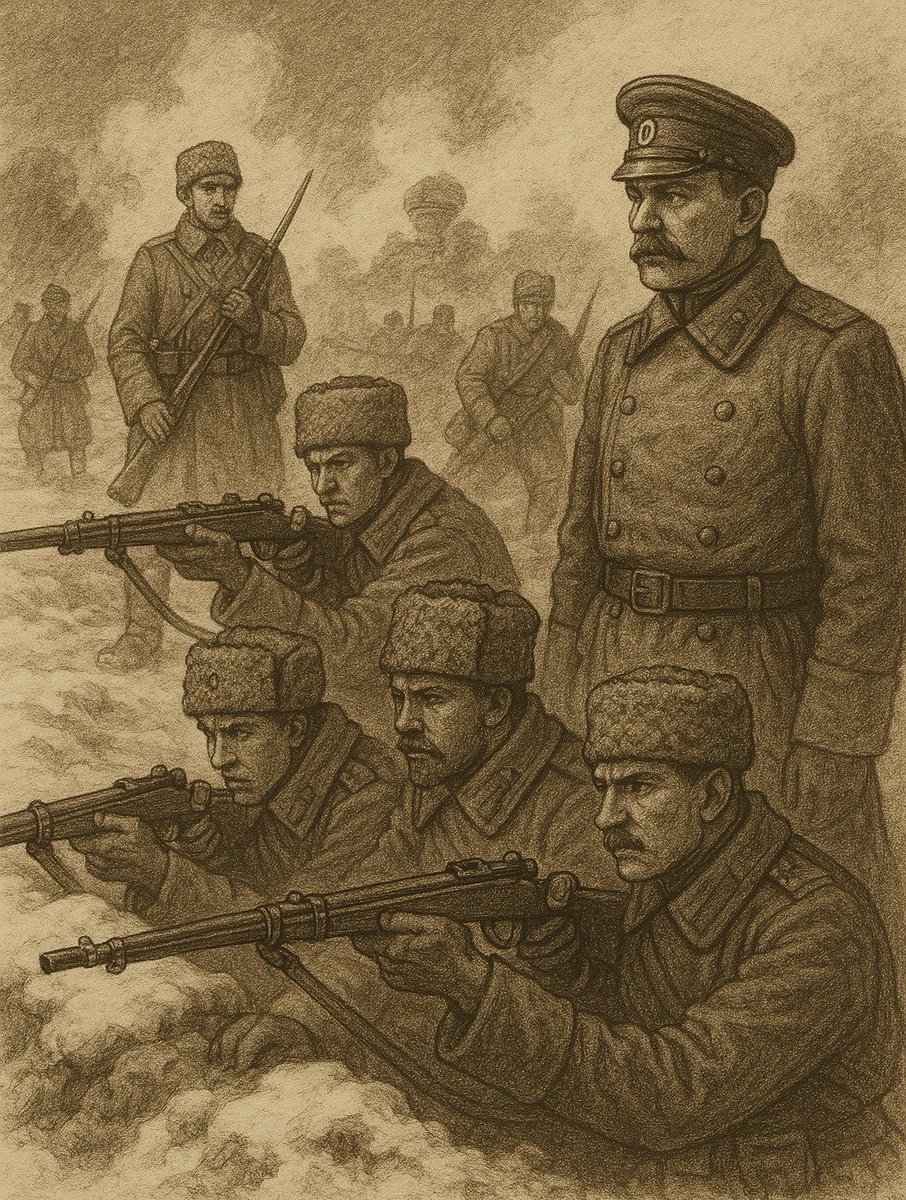
3. Limits of Elastic Defense
In the Winter War, tactical victories slowed the Soviet advance but did not alter the strategic result once defensive lines were breached. Ukraine’s position mirrors this limitation.
Without a counteroffensive force since Elite brigades’ potential is severely eroded, the outcome of an elastic strategy would be at best a temporary delay and at worst an extended path to collapse.
Operational flexibility is meaningless without the reserves to exploit it.
This scenario’s feasibility is below 30% given current materiel and industrial conditions.
In the Winter War, tactical victories slowed the Soviet advance but did not alter the strategic result once defensive lines were breached. Ukraine’s position mirrors this limitation.
Without a counteroffensive force since Elite brigades’ potential is severely eroded, the outcome of an elastic strategy would be at best a temporary delay and at worst an extended path to collapse.
Operational flexibility is meaningless without the reserves to exploit it.
This scenario’s feasibility is below 30% given current materiel and industrial conditions.

4. Scenario Two – Dnipro Line and Guerrilla War
This scenario calls for withdrawal behind the Dnipro River to consolidate defenses while initiating sustained irregular warfare in occupied areas. It is a strategy of survival rather than recovery.
Such a posture becomes probable when operational frontage exceeds sustainable density and casualty rates erode the ability to rotate brigades.
Once defensive sectors stretch beyond doctrinal limits, with gaps that ISR and drones cannot fully cover, the logic of shortening the line becomes unavoidable.
Clausewitz noted that defense is the stronger form of war, yet rarely delivers decision. Here, the defensive line would serve as a shield while the partisan network applies constant pressure behind enemy lines.
This scenario calls for withdrawal behind the Dnipro River to consolidate defenses while initiating sustained irregular warfare in occupied areas. It is a strategy of survival rather than recovery.
Such a posture becomes probable when operational frontage exceeds sustainable density and casualty rates erode the ability to rotate brigades.
Once defensive sectors stretch beyond doctrinal limits, with gaps that ISR and drones cannot fully cover, the logic of shortening the line becomes unavoidable.
Clausewitz noted that defense is the stronger form of war, yet rarely delivers decision. Here, the defensive line would serve as a shield while the partisan network applies constant pressure behind enemy lines.

5. Conditions and Consequences of Guerrilla War
This path requires political acceptance of abandoning major cities such as Kharkiv, Zaporizhzhia, an expanded Territorial Defense and special operations structure, and sustained Western support for an irregular war economy. The outcome would likely preserve statehood but at the cost of reduced borders, a fractured population, and an indefinite insurgency reminiscent of mid-twentieth-century resistance movements.
The feasibility is approximately 65%, but it locks Ukraine into a protracted frozen conflict with limited prospects for reversal.
This path requires political acceptance of abandoning major cities such as Kharkiv, Zaporizhzhia, an expanded Territorial Defense and special operations structure, and sustained Western support for an irregular war economy. The outcome would likely preserve statehood but at the cost of reduced borders, a fractured population, and an indefinite insurgency reminiscent of mid-twentieth-century resistance movements.
The feasibility is approximately 65%, but it locks Ukraine into a protracted frozen conflict with limited prospects for reversal.

6. Scenario Three – High Tech Active Defense
This doctrine shifts Ukraine to a technology-led defense built around mass drone production, pervasive electronic warfare, and long-range precision strike autonomy. It is not designed to reconquer lost territory but to halt further collapse by inflicting disproportionate costs on the attacker.
As former Commander-in-Chief Zaluzhnyi observed, technology favors a war of attrition where Ukraine can leverage asymmetric autonomous systems.
Yet, as he also warned, drones do not hold trenches. Infantry remains essential to secure and sustain the ground as increasingly seen recently.
This doctrine shifts Ukraine to a technology-led defense built around mass drone production, pervasive electronic warfare, and long-range precision strike autonomy. It is not designed to reconquer lost territory but to halt further collapse by inflicting disproportionate costs on the attacker.
As former Commander-in-Chief Zaluzhnyi observed, technology favors a war of attrition where Ukraine can leverage asymmetric autonomous systems.
Yet, as he also warned, drones do not hold trenches. Infantry remains essential to secure and sustain the ground as increasingly seen recently.

7. Requirements for High Tech Active Defense
To be viable, this scenario demands increasing FPV drone production, tripling electronic warfare coverage at the brigade level, and implementing full national mobilization to maintain manned defenses. It also requires NATO-level ISR integration, decentralized strike authority, political approval for deep strike campaigns, and a wartime industrial posture for unmanned systems.
Central to this transformation is the acquisition of advanced AI capabilities for real-time targeting, signal processing, and electronic counter-countermeasures. These technologies cannot be developed domestically at the required scale or speed and would necessitate unprecedented tech transfer from Western defense industries.
High Tech Active Defense cannot coexist with a peacetime civilian economy. It would require abandoning economic normality and committing to a total war footing. This in turn demands a binding agreement with Western partners, effectively surrendering postwar economic autonomy to international financial institutions such as the IMF in exchange for wartime survival.
Currently, most of these prerequisites remain unmet.
This scenario’s feasibility is 25%, yet it is the only path with potential to stabilize the front.
To be viable, this scenario demands increasing FPV drone production, tripling electronic warfare coverage at the brigade level, and implementing full national mobilization to maintain manned defenses. It also requires NATO-level ISR integration, decentralized strike authority, political approval for deep strike campaigns, and a wartime industrial posture for unmanned systems.
Central to this transformation is the acquisition of advanced AI capabilities for real-time targeting, signal processing, and electronic counter-countermeasures. These technologies cannot be developed domestically at the required scale or speed and would necessitate unprecedented tech transfer from Western defense industries.
High Tech Active Defense cannot coexist with a peacetime civilian economy. It would require abandoning economic normality and committing to a total war footing. This in turn demands a binding agreement with Western partners, effectively surrendering postwar economic autonomy to international financial institutions such as the IMF in exchange for wartime survival.
Currently, most of these prerequisites remain unmet.
This scenario’s feasibility is 25%, yet it is the only path with potential to stabilize the front.

8. Comparative Trade-offs
Elastic Defense requires moderate mobilization and significant rearmament of armored forces, but only buys time.
Guerrilla War demands minimal mobilization yet concedes extensive territory and infrastructure.
High Tech Active Defense requires total mobilization and a revolutionary industrial shift, but if achieved, could hold current lines.
Each path sacrifices something fundamental: territory, time, or national cohesion. Strategic choice here is not about how to win, but about what can still be preserved.

Elastic Defense requires moderate mobilization and significant rearmament of armored forces, but only buys time.
Guerrilla War demands minimal mobilization yet concedes extensive territory and infrastructure.
High Tech Active Defense requires total mobilization and a revolutionary industrial shift, but if achieved, could hold current lines.
Each path sacrifices something fundamental: territory, time, or national cohesion. Strategic choice here is not about how to win, but about what can still be preserved.


9. Strategic Reality and the Time Factor
Russia is pursuing a permanent war doctrine, underpinned by industrial depth and political continuity. Ukraine cannot outlast such a system through attrition alone; it must out-adapt it technologically, doctrinally, and operationally. There is no realistic military path to recapturing all lost territories with current manpower and materiel. The path to survival lies in scalable disruption.
As Musashi wrote, « one must perceive what cannot yet be seen ».
High Tech Active Defense remains invisible in practice, but it must be made real within 12 months or the window to act will close.
Russia is pursuing a permanent war doctrine, underpinned by industrial depth and political continuity. Ukraine cannot outlast such a system through attrition alone; it must out-adapt it technologically, doctrinally, and operationally. There is no realistic military path to recapturing all lost territories with current manpower and materiel. The path to survival lies in scalable disruption.
As Musashi wrote, « one must perceive what cannot yet be seen ».
High Tech Active Defense remains invisible in practice, but it must be made real within 12 months or the window to act will close.

10. Conclusion – The Last Viable Doctrine
High Tech Active Defense is not the easy choice. It demands full mobilization, a national drone and EW industrial pivot including technology transfer from western countries, and political acceptance of a total war posture. Survival now depends on scale, AI, and speed rather than sentiment.
Victory will not be measured in reconquest, but in the endurance of a functioning state. In modern war, courage is essential, yet insufficient, outcomes are engineered. Winning wars has never been only about bravery.

High Tech Active Defense is not the easy choice. It demands full mobilization, a national drone and EW industrial pivot including technology transfer from western countries, and political acceptance of a total war posture. Survival now depends on scale, AI, and speed rather than sentiment.
Victory will not be measured in reconquest, but in the endurance of a functioning state. In modern war, courage is essential, yet insufficient, outcomes are engineered. Winning wars has never been only about bravery.


• • •
Missing some Tweet in this thread? You can try to
force a refresh


